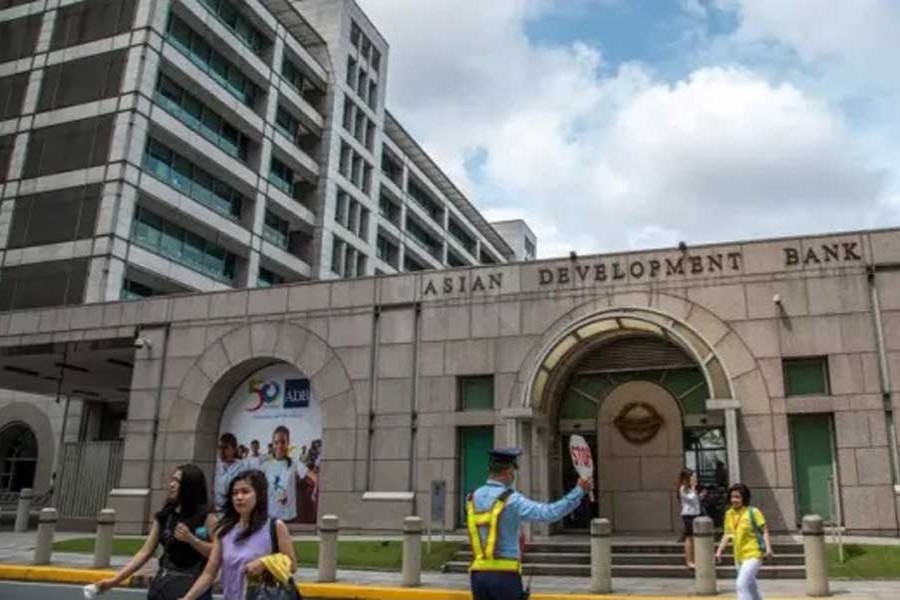Asian Development Bank (ADB) operations, comprising approvals of loans and grants, technical assistance (TA) and cofinancing, reached $28.9 billion in 2017 in its continued efforts to help meet Asia and the Pacific's development needs, according to preliminary figures.
Approvals of loans and grants from ADB's own resources reached a record $19.1 billion, representing a 9.0 per cent increase from the $17.5 billion seen in 2016. This puts ADB well on its way to meet its $20 billion target by 2020. Of the total, nonsovereign (primarily private sector) operations accounted for $3.2 billion, a 26 per cent increase from $2.5 billion in 2016. TA, meanwhile, increased by about 22 per cent to $205 million from $169 million in the previous year.
Commitments (the amount of loans and grants signed)-ADB's new performance measure-reached $20.1 billion. This is a significant increase from $13.3 billion in 2016, reflecting the signing of large projects approved in 2016 and 2017.
"The strong figures for ADB operations in the past year were supported by the successful merger of ADB's concessional Asian Development Fund lending operations with the Ordinary Capital Resources balance sheet-which took effect at the start of 2017," said ADB President Takehiko Nakao.
"This will allow us to deliver a much higher level of assistance to our developing member countries for years to come without seeking a capital increase," added the ADB president.
A highlight of ADB's operational figures for 2017 is climate financing, which reached a record $4.5 billion (comprising mitigation $3.6 billion and adaptation $0.9 billion), a 21 percent increase from 2016. This puts ADB in a good position to achieve its $6 billion climate financing target by 2020.
Cofinancing approvals declined to $9.5 billion in 2017 from the $13.9 billion recorded in 2016, partly due to the delay of large expected cofinanced projects. Disbursements were $11.7 billion in 2017, compared to $12.7 billion in 2016. This is because of lower approvals, and hence disbursements, of policy-based lending and counter-cyclical support facility, among other factors.
"Disbursements are essential to make a difference on the ground. Cofinancing and catalyzation is a much-discussed strategy in the international community to realize the Sustainable Development Goals," said Mr. Nakao. "ADB will come up with additional concrete measures to increase disbursements and cofinancing, building on the new procurement policy approved in April 2017 and ongoing efforts to leverage resources."
Among ADB's other operational highlights were projects that combine finance with innovative approaches to development, including satellite data and remote sensing to improve irrigation in Indonesia and Pakistan, pilot testing of climate-smart agriculture practices in Bangladesh, and supporting social welfare reforms in Mongolia to promote human development.
An innovative $100 million TA loan to the Philippines, approved in October 2017, will help the government prepare and deliver infrastructure projects under its Build programme
On the funding side, ADB offered new and innovative thematic products such as the health bond and gender bond. This is on top of increased efforts to raise local currency funding to meet the growing demand for nonsovereign local currency loans. ADB's Indonesian rupiah bond in December was the first bond issued from a multilateral development bank of which Indonesia is a shareholder.
ADB launched three high-impact publications in 2017. Meeting Asia's Infrastructure Needs estimated Asia and the Pacific's annual infrastructure needs at $1.7 trillion per year until 2030.
A Region at Risk: The Human Dimensions of Climate Change in Asia and the Pacific put forward scenarios of the devastating effects of climate change. The ADB history book, Banking on the Future of Asia and the Pacific focused on the region's economic development, the evolution of the international development agenda, and the story of ADB over 50 years.
To scale up the bank's operations with quality, the ADB Board approved the 2018 budget totalling $672.3 million, an increase of 3.9 per cent over 2017, comprising 2.2 per cent price growth and 1.7 per cent volume growth. This budget supports the ongoing investments in IT reforms and organizational resilience. ADB continues to make its utmost efforts at staff optimization and efficiency measures.
A key priority for ADB in 2018 is to finalize its new corporate strategy, Strategy 2030. ADB's 51st Annual Meeting of its Board of Governors will be held in Manila again in May after six years.
Strategy 2030, the impact of technological change and globalisation on jobs, aging and longevity dividends, role of women entrepreneurs, and private sector participation in infrastructure development will be among the topics discussed. ADB expects more than 3,000 participants to attend the meeting.


